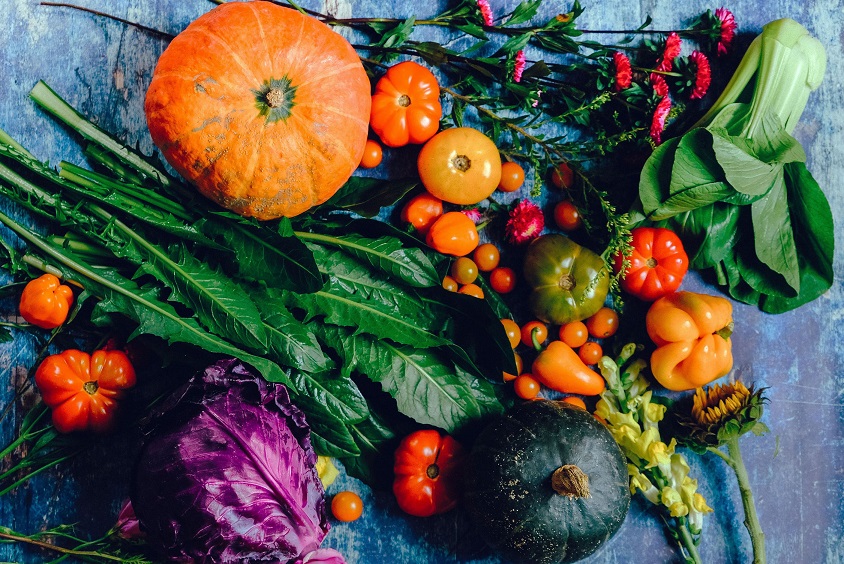
The practice of growing vegetables on rooftops in containers or directly on green roofs has been gaining momentum in recent years as a method to facilitate agricultural sustainability and food security in urban areas. Rooftop agriculture allows urban areas to become more innovative and efficient in their resource utilization through smart farming towards producing local, clean and healthy food (free from residues) with much reduced carbon footprints that currently underscores most fresh produce sold at supermarkets. Rooftop farms are becoming an important addition to available urban spaces like community farms or small allotments in and around cities where agriculture is taken up. It offers alternative spaces to grow fresh produce for personal consumption as well as for urban markets if supply exceeds need.
The production of vegetables on rooftops in containers or even more sophisticated structures like green roof should not be viewed as an alternative to large-scale vegetable production in rural areas, but rather as an enhancement to the urban food movement by providing a supplementary source of fresh and organic food. Many urban areas are now producing over 20% of their vegetable needs from within city boundaries, but due to limited growing spaces, land for crop production is often the most limiting factor to urban food production systems. Urban farms can produce significantly more produce on a per acre basis than that typically produced in rural areas due to the deployment of intensive, technologically focused, small-scale farming techniques and their optimization. It is also far less energy greedy than glasshouse or Controlled Environment growth chambers, specially in countries like India where the average temperature is around 23.9°C and average rainfall is 1210mm (climate-data.org).
So what are green roofs? Stretching the concept of rooftop farms beyond container grown plants, green roofs or living roofs are roofs partially or completely covered with vegetation. They can be constructed with a minimum of high quality water-proofing, root repellent system, drainage system, filter cloth, a lightweight growing medium, and plants (as per greenroofs.org). Although not commonly seen in India, indicative costs of green roofs are between £60m² and £100m² (~ 5,292 – 8,820) for extensive roofs and £100m² to £140m² (~ 8,820 – 12,347) for semi intensive or intensive roofs (as per thegreenroofcentre.co.uk). As per greenroofplan.com “Extensive green roofs are not well suited to vegetables and herbs because the growing medium is very shallow. Intensive green roofs are a completely different story. The deeper growing medium accommodates almost any variety of vegetable and herb you might want to grow. When there is an irrigation system in place, the garden is really not that much different from one on the ground.”
Needless to say, vegetated roof systems can provide numerous environmental benefits to the surrounding ecosystem. They aid in storm water management, increase the longevity of roofs, create habitats that support biodiversity in urban settings, provide building insulation that reduce cooling and heating costs, and in addition, can create green spaces for leisure. Probably the greatest single environmental benefit provided by green roofs is the reduction in total amounts of storm water runoff as green roofs can reduce runoff to as much as 60-100%, depending on the type of green roof system. Besides the numerous associated environmental benefits, green roofs can also provide social and learning experiences for local residents.
The concept of container grown rooftop or green roof farm is based on adopting modified crop management techniques depending on the area, climate, locality and type of horticulture (vegetables/fruits/herbs/flowers & ornamentals/medicinal plants, etc.) one wants to pursue. However, majority of rooftop farms are developed for vegetables and flowers. Gradually herbs and medicinal plants are also becoming a part of the system.
Before embarking on rooftop farming, one has to bear in mind that the structure of any type rooftop farm should be modular, water efficient, tech driven (using precision agriculture), and compost based. While dealing with rooftop farming, emphasis should be given on selection of shallow rooted crops. Water use efficiency can be increased with automated drip irrigation systems. Soilless culture or hydroponics can also become a good alternative to reduce the weight when considering a container grown roof top farm. This would enable efficient water use and nutrient uptake through application of organic, liquid based nutrients.
The most suited vegetable, flower and herb crops for a rooftop farm are:
Vegetables: Beans, Beet, Brinjal (Aubergines), Cabbage, Capsicum, Cauliflower, Chilli, Lettuce, Onion, Potato (in bucket), Tomato, etc. Flowers: Annuals, Balsam, Gladiolus, Marigold, etc. Herbs: Basil, Coriander, Lemon grass, Mint, Parsley, Rosemary, Thyme, etc. Others: Aloe vera, Cucumber, Dragonfruit, Melons, Strawberry, insect repelling plants etc.
Dr Mukti Sadhan Basu is a former director of the National Research Centre for Groundnut, Indian Council of Agricultural Research. He was also International Consultant on Aflatoxin Management, UNIDO and worked in Africa in that capacity. Presently he is Managing Director of SBSF Consultancy.